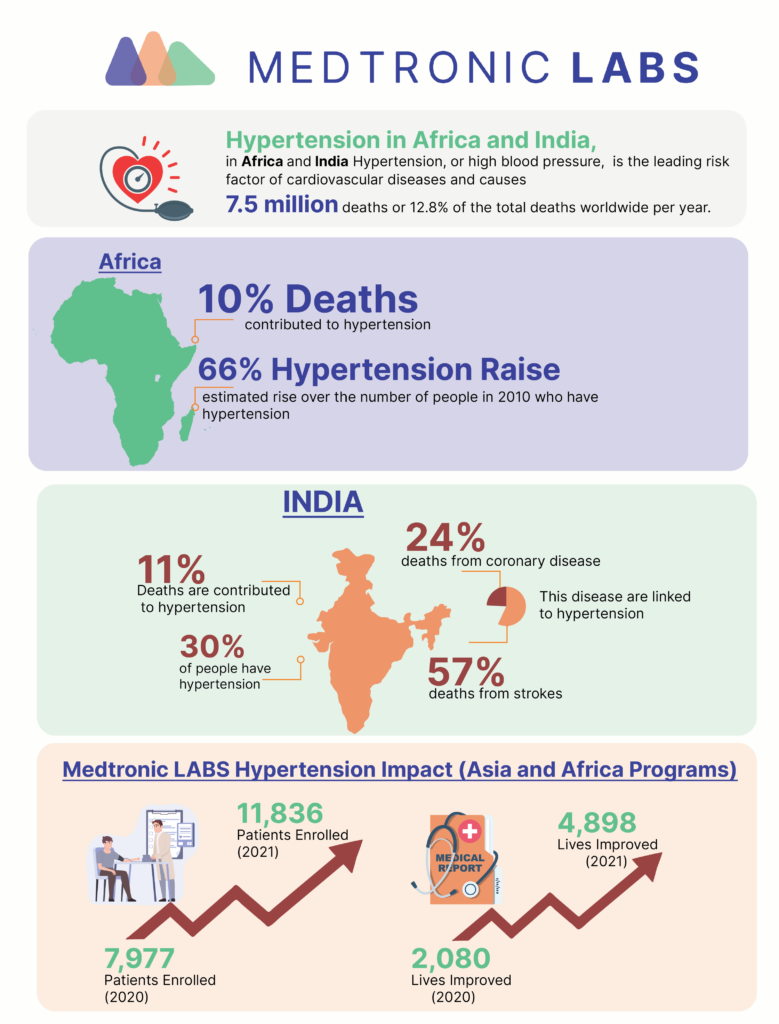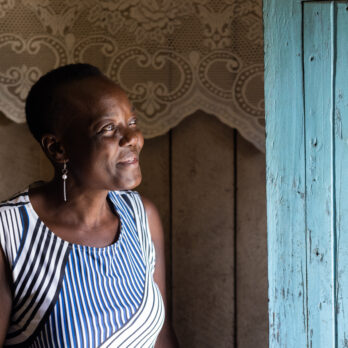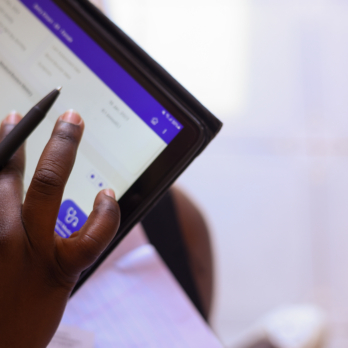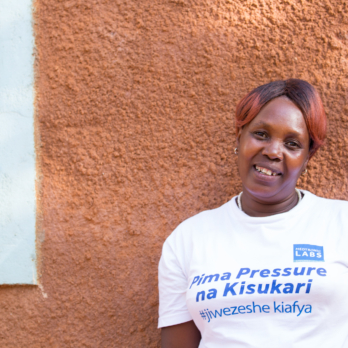Across the world, hypertension (high blood pressure) is the leading risk factor for cardiovascular diseases (CVDs) and causes 7.5 million deaths or 12.8% of total deaths worldwide per year [1]. Left untreated, high blood pressure can lead to stroke, heart attack, kidney disease, vision loss, and dementia.
In Africa where Medtronic LABS Empower Health and Akoma Pa health programs target hypertension, 10% of all deaths (900,000 lives) were a result of hypertension in 2016 [2]. In India, where Medtronic LABS Prerna healthcare delivery program supports patients with hypertension, in 2018 the disease contributed to 11% of all deaths, 3 out of 10 people have hypertension, and it was linked to 57% of deaths from strokes and 24% of deaths from coronary disease [3].
A common misconception is that hypertension impacts high-income countries. For the past few decades, the burden of hypertension has shifted from high-income countries to low- and middle-income countries. In Africa, the estimated number of people with hypertension has increased steadily from 54.6 million people in 1990 to 92.3 million in 2000 (70% rise) and 130.2 million in 2010 (41% increase from the year 2000). By 2030, Africa is estimated to experience a 66% rise over 2010 to impact 216.8 million [4].

A huge factor in hypertension-related deaths is early awareness and effective treatment and management. When Medtronic LABS Community Health Volunteers’ (CHVs) screen directly in communities, we find that many are unaware they have hypertension. For those that know of their condition, there is poor control and adherence due to lack of healthcare infrastructure, low primary health care engagement, and treatment cost.
Educating, screening, diagnosis, and treatment for patients is the first step in reversing hypertension rates. Once people are diagnosed, providing accessible, hyper-local, and equitable programs that include mobile monitoring of blood pressure, in-person and tele-counseling support, and personalized care plans all work together to help patients monitor and manage hypertension.
This transformative way of care delivery has been crucial in our impact on hypertension within underserved populations. Between 2020 to 2021 we enrolled 33% more patients in our Asia and Africa programs – and in doing so changed lives. In the future, we hope to continue our impact by increasing awareness around hypertension, reducing premature deaths, and offering accessible, affordable, and equitable treatment.
[1] The World Health Organization, The Global Health Observatory
[2] Hypertension in older adults in Africa: A systematic review and meta-analysis
[3] World Hypertension League, To Reduce Hypertension Burden in India
[4] Hypertension prevalence, awareness, treatment, and control and predicted 10-year CVD risk: a cross-sectional study of seven communities in East and West Africa (SevenCEWA)


